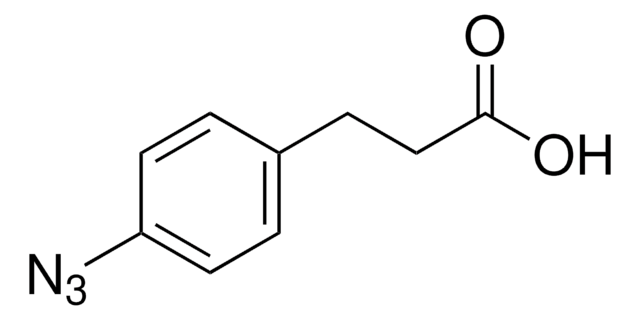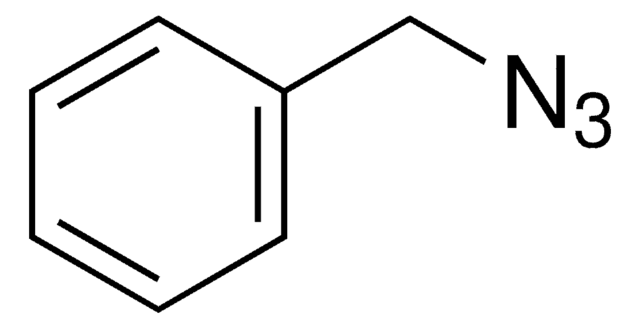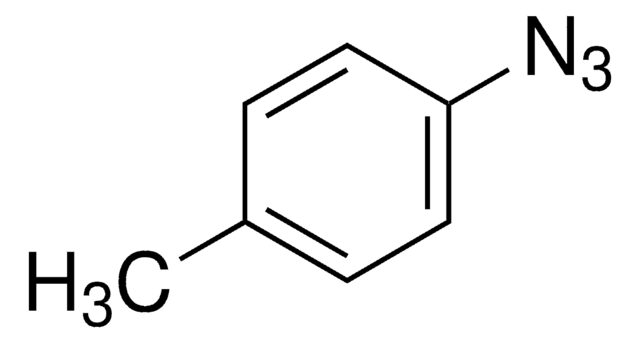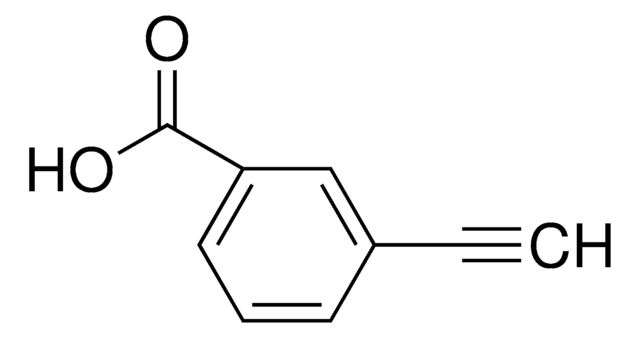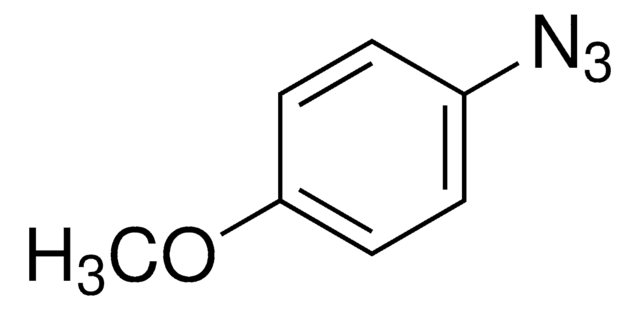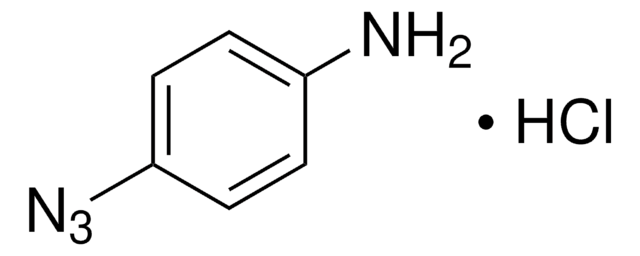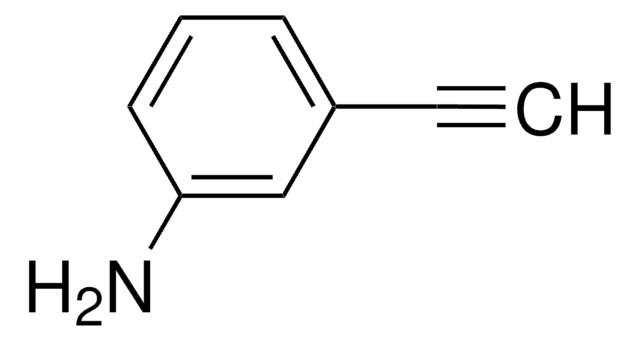778877
4-Azidobenzoic acid solution
~0.2 M in tert-butyl methyl ether, ≥95.0% (HPLC)
Synonym(s):
9-Azidobenzoic acid solution
Sign Into View Organizational & Contract Pricing
All Photos(1)
About This Item
Empirical Formula (Hill Notation):
C7H5N3O2
CAS Number:
Molecular Weight:
163.13
Beilstein:
1950876
MDL number:
UNSPSC Code:
12352106
PubChem Substance ID:
NACRES:
NA.22
Recommended Products
Quality Level
Assay
≥95.0% (HPLC)
form
liquid
concentration
~0.2 M in tert-butyl methyl ether
impurities
≤2.0% water
storage temp.
2-8°C
SMILES string
OC(C1=CC=C(N=[N+]=[N-])C=C1)=O
InChI
1S/C7H5N3O2/c8-10-9-6-3-1-5(2-4-6)7(11)12/h1-4H,(H,11,12)
InChI key
PQXPAFTXDVNANI-UHFFFAOYSA-N
Related Categories
General description
4-Azidobenzoic acid is an aromatic azide generally used in copper(I)-catalyzed azide-alkyne cycloaddition reactions.
Application
Review
Signal Word
Danger
Hazard Statements
Precautionary Statements
Hazard Classifications
Flam. Liq. 2 - Skin Irrit. 2 - STOT RE 2
Target Organs
Blood
Storage Class Code
3 - Flammable liquids
WGK
WGK 3
Choose from one of the most recent versions:
Already Own This Product?
Find documentation for the products that you have recently purchased in the Document Library.
Renxun Chen et al.
Biofouling, 25(6), 517-524 (2009-05-02)
Infection associated with implanted biomaterials is common and costly and such infections are extremely resistant to antibiotics and host defenses. Consequently, there is a need to develop surfaces which resist bacterial adhesion and colonization. The broad spectrum synthetic cationic peptide
Todd A Rickett et al.
Biomacromolecules, 12(1), 57-65 (2010-12-07)
Restoring continuity to severed peripheral nerves is crucial to regeneration and enables functional recovery. However, the two most common agents for coaptation, sutures and fibrin glues, have drawbacks such as inflammation, pathogenesis, and dehiscence. Chitosan-based adhesives are a promising alternative
Hirokazu Hasuda et al.
Biomaterials, 26(15), 2401-2406 (2004-12-09)
Photoreactive pullulan was prepared, the polymer was photoimmobilized on polymeric or organic surfaces, and its interactions with a protein and a cell type were investigated. The photoreactive pullulan was synthesized by a coupling reaction with 4-azidobenzonic acid. Surface modification was
Y Ito et al.
Biotechnology progress, 12(5), 700-702 (1996-09-01)
Photoreactive insulin was synthesized by coupling with azidobenzoic acid. The insulin derivative was immobilized onto the wells of polystyrene culture plates by photoir-radiation. The photoimmobilized insulin enhanced the growth of anchorage-dependent cells such as Chinese hamster ovary CHO-K1 and mouse
Bao Li et al.
Regenerative biomaterials, 5(3), 159-166 (2018-06-27)
Photo-reactive poly(vinyl alcohol) (PRPVA) was synthesized by introduction of phenyl azido groups into poly(vinyl alcohol) (PVA) and applied for surface modification. PRPVA was grafted onto cell culture plate surface homogeneously or in a micropattern. Human mesenchymal stem cells (hMSCs) cultured
Our team of scientists has experience in all areas of research including Life Science, Material Science, Chemical Synthesis, Chromatography, Analytical and many others.
Contact Technical Service